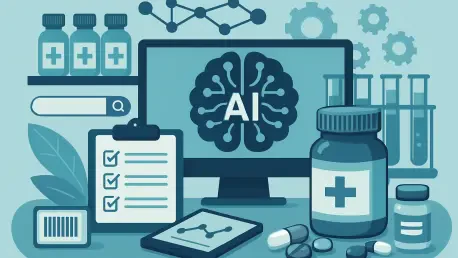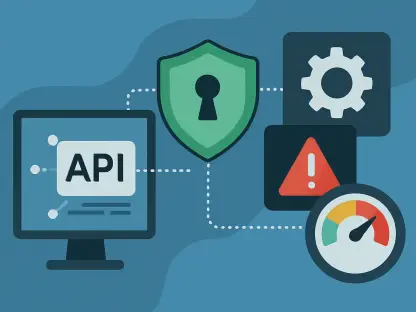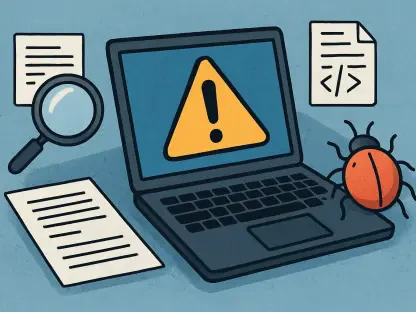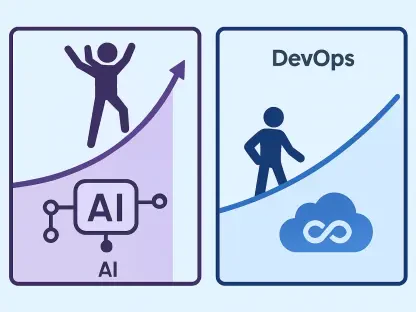In the intricate world of pharmaceutical manufacturing, where Good Manufacturing Practices (GMP) dictate the highest standards of quality and compliance, asset management remains a persistent challenge due to fragmented systems and manual processes that often lead to costly downtime. Artificial Intelligence (AI), particularly agentic AI, emerges as a transformative force with the potential to overhaul how equipment issues are detected, managed, and resolved in these highly regulated environments. Imagine a scenario where an equipment failure at midnight is instantly identified, documented, and communicated to the relevant teams without human intervention, slashing response times and safeguarding product integrity. This is not a distant dream but a tangible possibility as AI begins to reshape operational efficiency. While the technology holds immense promise for reducing administrative burdens and enhancing compliance, its integration into GMP settings is fraught with complexities, from regulatory uncertainties to cultural resistance. This article delves into the inefficiencies plaguing current asset management, explores AI’s groundbreaking potential, and outlines the critical steps needed to navigate the challenges of adoption.
Unpacking the Challenges of Asset Management in GMP Environments
The landscape of asset management in GMP settings is often marked by inefficiencies that stem from disconnected systems, a reality that hampers the pharmaceutical industry’s ability to maintain seamless operations. Platforms such as Enterprise Asset Management (EAM), Quality Management Systems (QMS), and Enterprise Resource Planning (ERP) typically operate in isolation, creating silos that necessitate manual coordination. This fragmentation translates into delayed responses to equipment failures, with research indicating that pharmaceutical facilities endure hundreds of hours of downtime each year. Such inefficiencies not only inflate operational costs but also place a heavy administrative load on quality professionals who are forced to prioritize coordination over strategic decision-making. The risk of non-compliance looms large, as data integrity issues and slow deviation handling can compromise product quality, underscoring the urgent need for a more integrated approach to asset management.
Beyond the technical disconnect, the human toll of these inefficiencies is significant and cannot be overlooked in the quest for operational improvement. Quality teams often spend disproportionate amounts of time on repetitive tasks like logging equipment issues or reconciling data across platforms, which detracts from their ability to focus on critical areas such as process optimization or regulatory adherence. The ripple effects of this burden can lead to errors, missed deadlines, and heightened stress within teams, all of which exacerbate compliance risks. As GMP environments demand precision and accountability, the current state of asset management reveals a clear gap that technology must bridge. Addressing these systemic shortcomings is not merely about enhancing efficiency but about ensuring that the foundational elements of product safety and regulatory standards remain intact amidst growing operational pressures.
AI as a Game-Changer for GMP Asset Management
Agentic AI stands poised to revolutionize asset management in GMP settings by introducing a level of automation and intelligence that traditional systems cannot match, offering a lifeline to an industry burdened by inefficiencies. Unlike conventional automation bound by rigid rules, these advanced AI agents are context-aware, capable of monitoring multiple data streams in real time, detecting equipment anomalies, drafting deviation reports, and even suggesting corrective actions based on historical patterns. Picture an autoclave malfunction occurring in the dead of night—within minutes, an AI agent could initiate documentation, alert the appropriate personnel, and prepare a preliminary analysis, drastically cutting down response times. This capability not only streamlines workflows but also minimizes the risk of quality issues escalating into major compliance breaches, positioning AI as an invaluable tool for operational excellence.
The transformative power of AI extends beyond mere detection and response, as it fosters a proactive rather than reactive approach to asset management that can redefine GMP operations. By analyzing trends and predicting potential failures before they occur, AI agents enable manufacturers to schedule maintenance during planned downtimes, avoiding unexpected disruptions that could halt production lines. This predictive insight, coupled with automated task coordination across departments, reduces the administrative workload on quality teams, allowing them to focus on higher-value activities like strategic planning and regulatory engagement. While the technology does not eliminate the need for human input, it amplifies decision-making speed and accuracy, ensuring that GMP environments can maintain stringent standards without sacrificing efficiency. The promise of AI lies in its ability to act as a supportive partner, enhancing rather than replacing the critical human element in pharmaceutical manufacturing.
Balancing AI Innovation with Human Oversight
Even as AI demonstrates remarkable potential to enhance asset management in GMP environments, the importance of human oversight remains paramount to ensure compliance and maintain trust in regulated settings. Quality leaders must continue to hold the reins on pivotal decisions, such as evaluating the impact of equipment deviations on product quality, approving changes to standard operating procedures, or determining the disposition of batches. AI agents, while adept at automating routine tasks and providing data-driven recommendations, are designed to serve in an advisory capacity rather than as autonomous decision-makers. This delineation ensures that the nuanced judgment required for regulatory interactions and compliance matters rests with trained professionals who can interpret AI insights within the broader context of GMP requirements.
Maintaining this balance between technological innovation and human control is not just a regulatory necessity but also a safeguard against potential oversights that could arise from over-reliance on automation. AI systems, despite their sophistication, may lack the ability to fully grasp the ethical or situational complexities inherent in pharmaceutical manufacturing, where a single misstep can have far-reaching consequences for patient safety. Human expertise provides the critical lens through which AI-generated suggestions are vetted, ensuring that actions align with both organizational goals and stringent industry standards. This symbiotic relationship allows GMP facilities to harness the efficiency of AI while preserving the accountability and discernment that only human oversight can offer, creating a framework where technology and expertise work hand in hand to elevate asset management practices.
Overcoming Barriers to AI Integration in GMP Settings
The road to integrating AI into GMP asset management is laden with challenges that demand careful consideration and strategic planning from industry stakeholders. One of the most pressing obstacles is the complexity of unifying disparate systems, as platforms like EAM, QMS, and ERP often use incompatible data formats and terminologies, requiring extensive standardization efforts. This integration process is not only technically demanding but also time-intensive, often stretching resources thin. Additionally, the financial implications of AI implementation can vary widely depending on the scale and scope of deployment, posing a barrier for organizations with constrained budgets. These hurdles highlight the intricate nature of embedding cutting-edge technology into established, highly regulated environments.
Beyond technical and financial constraints, cultural resistance within teams accustomed to traditional, manual processes presents a significant impediment to AI adoption in GMP settings. Many quality professionals and operational staff may harbor skepticism toward AI recommendations, viewing them as untested or unreliable compared to familiar methods. Building trust in these systems requires not only demonstrable proof of efficacy but also comprehensive training programs to familiarize teams with AI functionalities and benefits. Moreover, the lack of clear validation protocols for AI tools under current regulatory frameworks adds another layer of uncertainty, as manufacturers must navigate uncharted territory to ensure compliance. Addressing these multifaceted challenges calls for a measured approach, where incremental implementation and continuous dialogue with stakeholders pave the way for sustainable integration.
Regulatory Considerations for AI in Pharmaceutical Manufacturing
Navigating the regulatory landscape for AI in GMP environments is a critical aspect of adoption, as evolving guidelines shape how this technology can be responsibly deployed in pharmaceutical manufacturing. The FDA’s discussion paper from a couple of years ago set the tone by emphasizing the need for transparency, explainability, and human oversight in AI applications, signaling a focus on accountability. Meanwhile, Europe’s AI Act, set to be fully applicable by 2026, categorizes pharmaceutical AI as high-risk, imposing strict requirements for testing, validation, and governance to mitigate potential risks. Noncompliance with such standards could result in severe penalties, making it imperative for manufacturers to align their AI strategies with these emerging expectations while regulatory clarity continues to develop.
To manage these regulatory demands, a cautious and proactive stance is recommended for organizations venturing into AI integration within GMP settings. Starting with low-risk, high-value applications—such as automated monitoring and alerting—allows companies to test AI capabilities without exposing themselves to significant compliance risks. Thorough documentation of AI decision logic and maintaining parallel manual processes during initial phases are also advised to provide a safety net against potential regulatory scrutiny. Engaging with regulators through established frameworks like GAMP 5, which is being adapted for AI contexts, fosters collaboration and ensures that deployment strategies meet evolving standards. This deliberate approach not only mitigates risks but also builds a foundation of trust with regulatory bodies, facilitating smoother adoption over time.
Exploring Deployment Models for AI in GMP Operations
The integration of AI into GMP asset management can be tailored to an organization’s specific needs and infrastructure through a variety of deployment models, each offering distinct advantages. For companies heavily customizing or developing their EAM platforms, embedding AI directly into these systems provides seamless access to asset data, enabling real-time monitoring and response capabilities. This approach suits organizations with the technical capacity to adapt their systems internally, ensuring that AI functionalities are deeply integrated into existing workflows. The direct embedding model minimizes dependency on external solutions, offering a streamlined path to harnessing AI for enhanced operational control and efficiency in regulated environments.
Alternatively, a middleware orchestration layer presents a flexible solution for organizations managing multiple vendor systems, avoiding the need for extensive modifications to individual platforms. By leveraging APIs and webhooks, this model facilitates interoperability across disparate systems, allowing AI agents to coordinate tasks and share data without disrupting established setups. Another promising option is the use of Retrieval-Augmented Generation (RAG) agents, which enhance explainability by incorporating historical context from past deviations and audits. This approach not only improves decision-making accuracy but also builds trust with regulators by providing transparent, data-backed insights. These diverse deployment models underscore the adaptability of AI integration, empowering GMP facilities to choose strategies that align with their technological maturity and operational goals.
Strategic Preparation for AI Adoption in GMP Settings
Laying the groundwork for AI integration in GMP environments requires a strategic focus on several foundational elements to ensure alignment with regulatory and operational standards. Security stands as a top priority, with measures like least-privilege access and robust audit mechanisms essential to protect sensitive data from unauthorized access or breaches. Equally important is the maturity of APIs, which must support seamless data sharing across platforms to enable AI agents to function effectively. Establishing clear governance structures to delineate which actions are autonomous and which require human review helps maintain accountability, ensuring that AI complements rather than overrides critical decision-making processes in regulated settings.
Further preparation involves addressing data privacy and transparency to build a sustainable framework for AI adoption in GMP operations. Hosting private models for AI systems safeguards proprietary and patient-related information, a non-negotiable aspect in pharmaceutical manufacturing. Additionally, maintaining transparent workflows through comprehensive audit trails ensures that every AI-driven action can be traced and justified, a key factor in meeting regulatory expectations. These steps collectively balance the drive for innovation with the stringent requirements of GMP compliance, creating an environment where AI can enhance asset management without compromising on safety or accountability. By prioritizing these areas, organizations can position themselves to adopt AI with confidence, mitigating risks while maximizing operational benefits.
Building a Future of AI-Driven Excellence in GMP Asset Management
Reflecting on the journey discussed, it’s evident that the exploration of AI in GMP asset management has been a story of cautious yet promising progress, driven by the need to address deep-rooted inefficiencies. Agentic AI has shown remarkable potential to transform how equipment failures are detected and managed, offering real-time solutions that drastically cut response times and administrative burdens. The balance struck between technological innovation and human oversight has been crucial, ensuring that compliance and product quality remain uncompromised. Challenges like system integration, cultural trust, and regulatory uncertainty have been acknowledged, with practical steps taken to navigate these hurdles through strategic preparation in security, governance, and transparency.
Looking ahead, the focus should shift to actionable next steps that build on these early efforts, such as piloting low-risk AI applications to gain practical insights while refining deployment models to suit diverse organizational needs. Collaboration with regulatory bodies must intensify to shape guidelines that support innovation without sacrificing safety, ensuring that frameworks evolve in tandem with technology. Organizations should also invest in training programs to foster cultural acceptance among teams, turning skepticism into advocacy for AI tools. By continuing to prioritize incremental adoption over rushed implementation, the pharmaceutical industry can fully realize AI’s potential to elevate asset management, setting a new standard for efficiency and compliance in GMP environments.









